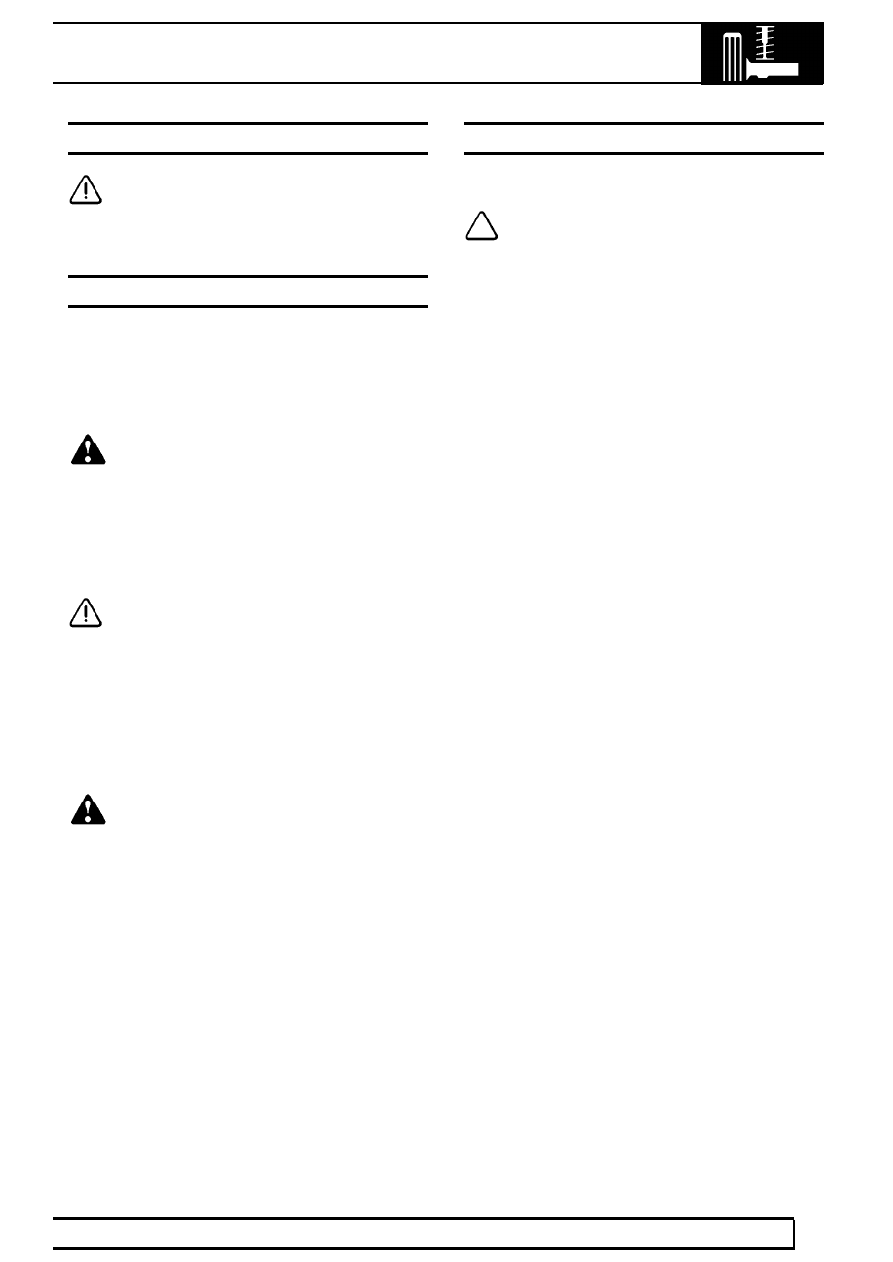Range Rover. Manual - part 185

ELECTRONIC AIR SUSPENSION
1
REPAIR
UNDERBODY WAX
CAUTION: Ensure all under body wax is
removed from mating surfaces of fixings
before fitting.
DEPRESSURISE SYSTEM
Service repair no - 60.50.38
Equipment required: TestBook
Depressurise
WARNING: Air suspension is pressurised
up to 10 bar (150 lbf/in
2
). Dirt or grease
must not enter the system. Wear hand, ear
and eye safety standard protection when servicing
system.
1. Connect TestBook and follow instructions to
depressurise complete system.
CAUTION: Depressurising system will
lower body on to bump stops.
2. Ensure system is completely depressurised:
Check that all air springs are deflated, and
vehicle has dropped evenly on to the bump
stops. If a spring, or springs, remains inflated
possibly due to a stuck solenoid valve, it will be
necessary to disconnect the pressurised pipe at
that air spring.
WARNING: Wear hand, ear and eye safety
standard protection. For extra protection
wrap a clean cloth around pipe to be
disconnected. Note that vehicle will lower to bump
stop when pipe is disconnected.
3. Disconnect air pipe.
See this section.
Repressurise
4. Run engine to repressurise system.
SYSTEM CALIBRATION
Equipment required: TestBook
NOTE: This procedure must be carried out
when a new ECU or height sensor has
been fitted.
Calibration will also be required if any part affecting
damper relationship to body is changed i.e. damper
mounts, axles, chassis unit and body panels. The
vehicle can be calibrated laden or unladen, but Gross
Vehicle Weight must not be exceeded. Tyres must all
be the same size and at the correct pressures.
IMPORTANT: The floor used for calibration must
be level and smooth in all directions to enable
procedure to be carried out successfully.